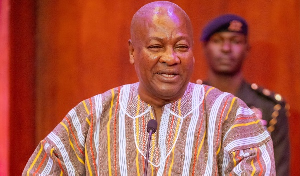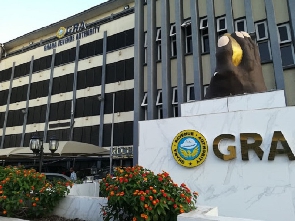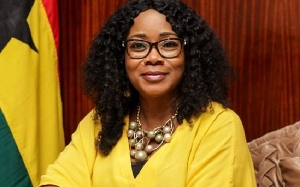The African Policy Lens (APL) has challenged President Mahama to tell Ghanaians that the last NDC government contributed US$21.15 billion to the total nominal debt stock of US$49.4 billion at the end of the December 2024.
This debt represents a whopping 42% of Ghana’s total debt stock since 1957 and it has been very significant reason for Ghana’s recent unsustainable debt levels.
In terms of the local currency, APL explained that Ghana’s total debt stock stood at GHS726.7 at the end of December 2024, representing a debt-to-GDP ratio of 61.8% (see Statement 143 of the 2025 Budget Speech).
Using the prevailing exchange rate, it means that the last NDC Government alone contributed GH¢307.3 billion to the GH¢726.7 total debt stock Nana Akuffo Addo left behind in December 2024.
APL explained that even though it does not sound academically right to use nominal debt to describe the trends of debt stock, the Ghanaian public unfortunately has become used to this method of debt analysis.
This statement has become necessary because of a statement made by President Mahama during his campaign tour in 2024 that suggests that the last NDC Government did not borrow up to UD$3 billion!
Again, NDC communicators have been misleading Ghanaians concerning the debt situation of the country. APL has advised communicators of the Government to follow the country’s debt stock before coming out with any statement on it.
The think tank continued, quoting figures from the Ministry of Finance’s Annual Debt Management Reports (available on the website of the ministry), that after 19 years in office, former President Jerry John Rawlings left a total debt stock of about UD$7.16 billion.
Former President Agyekum Kufour inherited this debt and technically added less than a billion dollar to it because of the debt reliefs from the enhanced HIPC initiative.
However, having inherited $8.07 billion from Kufour, NDC under the leadership of President John Evans Atta-Mills and John Dramani Mahama added a whopping US$21.15 billion and pushed the country’s gross public debt to US$29.2 billion by December 2016.
Before 2022, Ghana had been borrowing to meet its debt payment obligations, especially those relating to the Eurobonds. Unfortunately, because of the global economic turmoil, many countries from the developing world including Ghana were downgraded to a rate that made it practically impossible to procure bonds from the external markets.
It was mainly because of this situation that the then Finance Minister initiated the move for debt restructuring. These included domestic debt exchange programme (DDEP), bilateral debt negotiations and negotiations with the official debt creditors.
Ironically, while NDC has been blaming Ken Ofori Atta for debt restructuring, they recently took credit for the projected US$2.8 debt reliefs after signing an MOU on it with the Official Credit Committee.
APL explained that the continuous fall in the public debt stock is because of the various debt restructuring measures initiated by Ken Ofori Atta.
“It is never true that the so-called enhanced confidence level in the economy, after President Mahama took over the affairs of the nation, is the reason for the debt reliefs” the statement added.
APL continued with its public education by adding that politicians unfortunately explained public debt in a way that would cause public disaffection to their political opponents.
Ideally, economists use debt-to-GDP ratio to explain debt sustainability. The main reason for the choice of debt-to-GDP ratio is to avoid the danger of adding depreciation to debt accumulation.
There are various thresholds for using debt-to-GDP ratio to determine debt sustainability. While the IMF does not accept anything above debt-to-GDP ratio of 60% for economies like Ghana, the magnanimous West African Monetary Institute (WAMI) accepts up to 70% for countries in its zone (see the ECOWAS Convergence Criteria).
Using the 2006 constant prices, Kufour inherited an economy with debt-to-GDP ratio of 182%! Ghana’s debt was therefore highly unsustainable in the year 2000. After joining HIPC and enjoying debt reliefs, Ghana’s debt-to-GDP ratio drastically went down to 32% in 2008.
Unfortunately, by 2014, Ghana’s debt-to-GDP ratio has gone up again to an unsustainable level of 71%. Indeed, Mahama left an economy with an unsustainable debt-to-GDP ratio of 73.3%! This is not a record the former President should be proud of it.
For the first time since 2006, in 2017, Ghana’s debt-to-GDP ratio experienced a decline (to around 68.9%). In 2018, the economy was rebased (from 2006 to 2013 constant prices) and the GDP became 24.2% higher. Subsequently, what would have been a debt-to-GDP ratio of 73.3% in 2016 (using the 2006 constant prices) became 56.8% in the new base year.
This declined to 55.5% 2017 and inched up to about 62% in 2019 but went up astronomically to 76.1% in the 2020 (the Covid-19 pandemic year). At the end of 2023, Ghana’s provisional debt-to-GDP ratio had declined to 72.3%!
Therefore, in terms of debt-to-GDP ratio, Akuffo Addo’s records in December 2024 (61.8%) was far better than what President Mahama left in December 2016 (73.1%).
APL concluded by advising the managers of the economy to stop propaganda with the debt since when it comes to debt management, NDC has the worst records in the history of the Ghanaian economy.
Business News of Sunday, 13 April 2025
Source: P K Sarpong, Contributor













